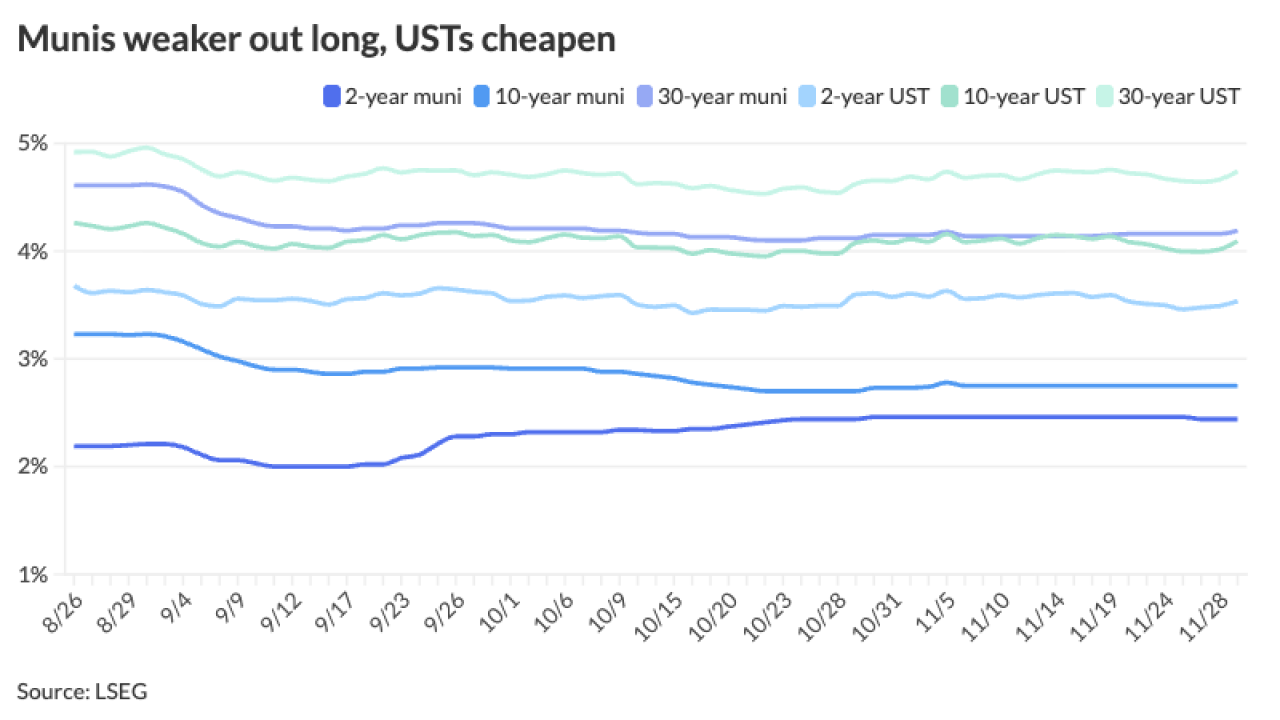New York’s new goal of selling half of its bonds competitively drew both praise and criticism from market sources on Wednesday.
Gov. Andrew Cuomo’s budget proposal and financial plan released Tuesday called for the state to double to 50% its target for competitive bidding, up from the current target of 25% of new issues.
In the current fiscal year, the state has exceeded its target, competitively selling 30% of its bonds as opposed to selling through negotiation, according to the Division of Budget.
State Comptroller Thomas DiNapoli supports competitive bond sales when issuing state debt, according to spokeswoman Emily DeSantis.
“Competition adds transparency to the process and should result in more favorable rates,” she said in an e-mail. “The comptroller’s office routinely uses a competitive sale process for general obligation and [New York Local Government Assistance Corp.] bond sales it issues.”
Other market sources offered mixed opinions.
“Competitive bidding has pluses and minuses,” said a market source. “For a credit like New York you’re probably going to see a few of the usual players fairly consistently winning the business, which means that firms that would participate in a negotiated setting won’t be able to participate in the same fashion.”
Smaller underwriting firms may find it more difficult to participate on deals, the source said.
One market participant said that investment banks are likely to use syndicates on large state bond deals.
“You want some company,” the source said. “People are not going to want to bid alone. They’ll want a consensus of two, three or four firms rather than relying on just their own judgment to price the bonds.”
The change would affect the retail market for New York bonds because competitive deals don’t have a retail order period.
“It’s hard to get salesmen to work on a competitive deal,” a market source said. “They don’t want to get their customers all excited if there’s a one in three or one in four chance they’re going to get it.”
Another market participant said that more competitive deals reduces the incentive for banks to work on deals on behalf of the state because they make more money on negotiated deals than on competitive ones.
“Why do you spend time on a deal when [there’s a chance] you don’t get paid?” the market participant said. “The clear message the state is sending is that they think they can do better on their own.”
Market sources also offered mixed views on whether competitive deals priced better than negotiated. One said bidders on competitive deals padded their bids because of the risk they would have to take some of the bonds on their books. Another said that negotiated pricings get padded too, just in other ways.
“The true interest cost isn’t going to vary too much [for the issuer],” said one market participant.
In fiscal 2008 the state sold 35% of its bonds competitively, according to the Division of Budget. The following two years fiscal years saw competitive deals drop to zero and 9%, respectively.
“Market conditions in 2008 and 2009 made it challenging to reach the 25% goal,” Division of Budget spokesman Erik Kriss said in an e-mail.
If New York meets its goal, it would competitively sell $2.76 billion of state-related debt in the fiscal year that begins on April 1.
About two thirds of the state’s $5.52 billion of bonds it expects to issue in the next fiscal year would be personal income tax bonds, which can be issued by five public authorities, including the Dormitory Authority of the State of New York and the Empire State Development Corp.





